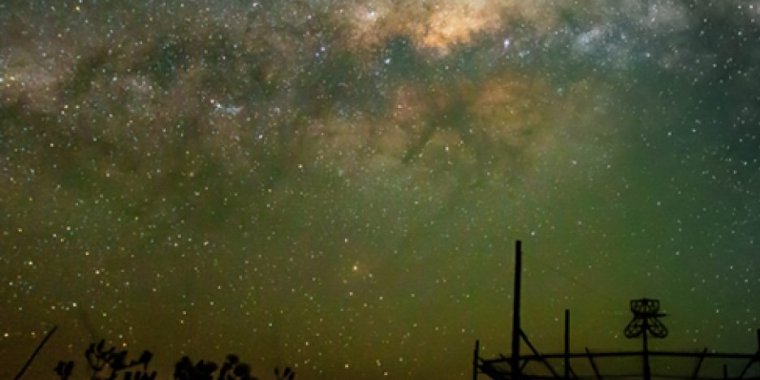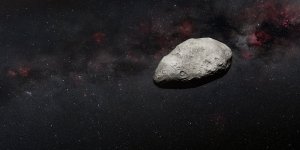| News / Space News |
Were galaxies different in the early universe?
An array of 350 radio telescopes in the Karoo desert of South Africa is getting closer to detecting "cosmic dawn," the era after the Big Bang when stars first ignited and galaxies began to bloom.

The Milky Way above HERA. HERA sits in a region where radios, cellphones and gas-powered cars are prohibited. Photo: Dara Storer
In a paper, the Hydrogen Epoch of Reionization Array, or HERA, team reports that it has doubled the sensitivity of the array, which was already the most sensitive radio telescope in the world dedicated to exploring this unique period in the history of the universe.
The HERA collaboration is led by University of California, Berkeley scientists and includes others across North America, Europe and South Africa.
While the researchers have yet to detect radio emissions from the end of the cosmic dark ages, their results provide clues to the composition of stars and galaxies in the early universe.
The data show that the earliest stars, which may have formed around 200 million years after the Big Bang, contained few other elements than hydrogen and helium.
That’s different than the composition of today's stars, which have a variety of so-called metals, the astronomical term for elements ranging from lithium to uranium that are heavier than helium.
The finding is consistent with the current model of how stars and stellar explosions produced most of the other elements.
"This is moving toward a potentially revolutionary technique in cosmology," said Joshua Dillon, a scientist at UC Berkeley and lead author of the paper.
HERA seeks to detect radiation from the neutral hydrogen that filled the space between early stars and galaxies and determine when that hydrogen became ionized and stopped emitting or absorbing radio waves.
When the radio dishes are fully online and calibrated, likely this fall, the team hopes to construct a 3D map of the bubbles of ionized and neutral hydrogen as they evolved from about 200 million to 1 billion years after the Big Bang. The map could tell us how early stars and galaxies differed from those of today and how the universe as a whole looked in its adolescence.
The fact that the HERA team has not yet detected these bubbles of ionized hydrogen in the cold hydrogen of the cosmic dark age rules out some theories of how stars evolved in the early universe.
"Early galaxies had to have been different than the galaxies we observe today for us not to have seen a signal," said Aaron Parsons, principal investigator for HERA and a UC Berkeley astronomer. "In particular, their X-ray characteristics had to have changed. Otherwise, we would have detected the signal we're looking for." (U.S. National Science Foundation)
YOU MAY ALSO LIKE





